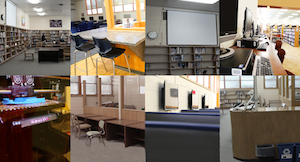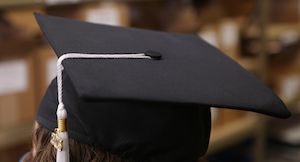
There’s no doubt about it: Technology adds flash and excitement to students’ worlds.
One emerging innovation, augmented reality (AR), uses digital tools (most often a smartphone or other tablet device) to superimpose graphics, audio, and other sensory enhancements over a real-world environment. AR differs from the more widely recognized virtual reality, which immerses the user in a completely fabricated world. AR merely adds a layer of digital reality over the world around us.
While AR-specific tools might not yet be common in schools, most people have experienced AR in some form. Games like Pokémon Go enjoy a wild pop culture following (and can even be used to support learning). Filters over selfies (Snapchat, anyone?), marketing gimmicks, and even truly useful tools like Google Translate all layer extra information over our surroundings. Naturally, educators are beginning to wonder—how could this technology enhance the student experience?
Like any advance in technology, the AR phenomenon sparks debates—including some surprisingly polarizing ones. Let’s take a look at some of the dichotomies found in conversations about AR.
Possibilities vs. Privacy
Imagine a group of social studies students released into the wild to solve a dilemma their counterparts faced in 1944, visiting local monuments along the way. Consider how a science class would be transformed by a virtual “lens” overlaying details about wildlife, plants, or constellations in the sky.Imagine kids learning in a 360-degree classroom, breaking the mold of rows of desks and a single focal point. How would students react to animated models of weather patterns, cell structures, historical figures, or far-off places superimposed next to them, appearing as 3D props to enhance an otherwise routine lesson?
While you’re at it, imagine time travel is possible thanks to video sources, 3D renderings of scenes, and the ability to physically replicate past interactions. Go ahead, imagine people from different cities on multiple continents projecting their image into the same identically constructed spaces in order to collaborate in (holographic) person.
It’s easy to get carried away by the prospect of a whole new dimension of possibilities. That said, when considering any new edtech, school leaders must focus first on privacy and security. This is especially true considering AR technology relies on GPS, audio recording, and video cameras to recognize its surroundings and offer corresponding content—often at the risk of revealing students’ locations and identities. Certain AR apps require access to personal data, including email accounts, birth dates, and other information. Very few have been built around a FERPA-compliant framework.
The bad news? There’s not a solid solution to this yet. Since AR technology is so new, privacy and security are the subject of intense scrutiny, without resulting in many solutions.
What we know for sure is that without proper vetting, AR apps can carry the risk of revealing information or introducing malicious software into a school's network. It’s crucial to avoid the temptation to let your security safeguards be swept away on the wave of excitement.
Magic vs. Utility
What attracts kids (and adults) to AR is the surreal feeling of discovering an undetected world around you, only visible through “magic glasses” (no, not Google Glass). It all seems too cool to be true, and depending on the application, it’s a colorful addition to an everyday setting.We have a tendency to equate what we can’t touch with magic, imagination, and dreams. However, the gap between novelty and utility isn’t so wide when it comes to AR. Some of the most truly magical aspects of this technology make the world more accessible and inclusive for more students.
In a recent interview with Advancing K12, Kate Rietmann, technology specialist at Portage Community School District, described a device which attaches to glasses to help people with limited vision “see” their surroundings better. This device uses facial recognition software to tell the wearer who is in front of them, which allows them to focus on what the person is saying rather than spending time trying to identify the person. This digital overlay is auditory rather than visual.
“Especially considering a classroom might be very overwhelming for a student with vision problems, knowing who is standing in front of them before the person starts to speak could potentially be very helpful,” Rietmann said.
Other applications of AR with practical uses include construction planning, marketing, military intelligence, automotive repair, and training in various fields. Pragmatic use doesn’t mean AR has to be any less dazzling, as seen in this medical training video of a beating heart.
Livelier World vs. Reclusive World
Exploring the possibilities of AR is exciting, and the industry is estimated to be worth $160 billion by 2024. AR isn’t going away anytime soon, and there are plenty of ways it can make a positive change in the world. But when does too much of a good thing become a bad thing?The appeal of augmented reality relies on the interpretation of AR making our world somehow livelier. Watching sports goes from passive to interactive with AR layering in extra content. Surrounding students with colorful 3D objects, not to mention the allure of using smartphones and other technology during class, adds flash and makes a lesson seem extra interesting. Imagine a personal assistant (Siri from Apple, Cortana from Microsoft) taking on a holographic, semi-corporeal shape. A friend with settings, so to speak.
On the other hand, a lurking downside to AR is the possibility of the enhanced reality becoming increasingly attractive—and actual reality being left behind. When augmented or virtual reality is portrayed in media, they are often accompanied by cautionary tales of over-use (think of Star Trek crew members becoming hooked on the fantasy worlds created in the holodeck).
Is a world viewed through the lens of a smartphone truly livelier—or does it make people more likely to withdraw? The classic debate about technology and its tendency to become a bad habit or security blanket is alive and well in conversations about emerging AR.
Augmented reality, whether on a small or grand scale, will impact education and the way students use technology in and out of school. The possibilities are probably beyond what we’re capable of imagining today. So long as we balance those ideas with a pinch of healthy caution, we can feel confident in creating our own new layers of reality.
Are you an early adopter of augmented reality? Check out these ideas for introducing AR in your school.
WHAT'S NEXT FOR YOUR EDTECH? The right combo of tools & support retains staff and serves students better. We'd love to help. Visit skyward.com/get-started to learn more.

|
Erin Werra Blogger, Researcher, and Edvocate |
Erin Werra is a content writer and strategist at Skyward’s Advancing K12 blog. Her writing about K12 edtech, data, security, social-emotional learning, and leadership has appeared in THE Journal, District Administration, eSchool News, and more. She enjoys puzzling over details to make K12 edtech info accessible for all. Outside of edtech, she’s waxing poetic about motherhood, personality traits, and self-growth.




